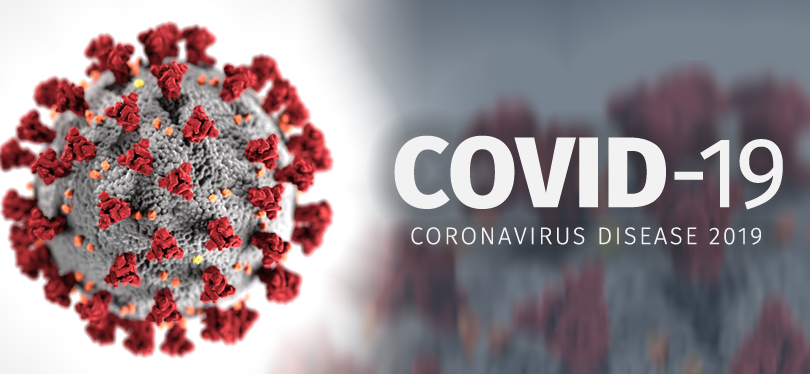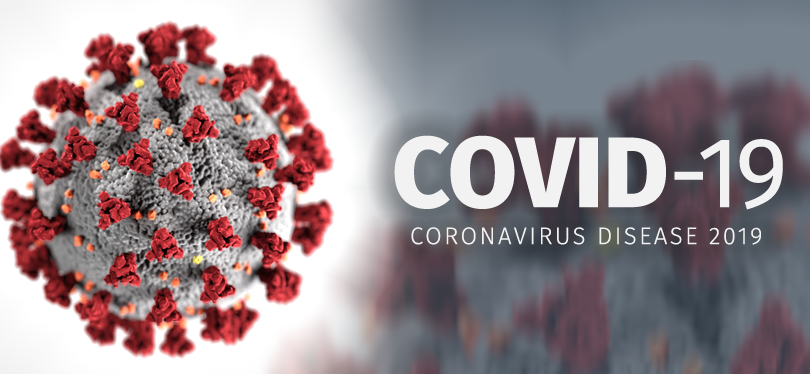Lab personnel should apply the general population CDC recommendations, but extra measures can be put in place in the lab or work environment, to keep everyone safe.
Between people getting sick, people caring for sick family members, and school closures, your lab may be working with a reduced or skeleton staff on site. Most institutions can identify functions that can be done remotely, such as finance and IT, and encourage this personnel to work from home if possible.
For other essential functions, such as animal care, motivating supplemental personnel to compensate for reduced normal staff can be done in-house.
As an example, Indiana University has an emergency response plan, in which they recommend to recruit and cross-train personnel on cage change or general husbandry practices so that they can perform multiple functions and fill in where and when necessary.
The Fred Hutchinson Cancer Research Center recommends reaching out to personnel who were part of the animal care teams previously: they are a great resource, having already been trained.
Another way to support your employees is to remind them of your sick leave and time-off policies, and implement support structures such as remote work infrastructure and potential incentives for those coming on site.
Remind your employees of the CDC guidelines: wash your hands often, avoid touching your eyes, nose and mouth, cover your mouth and nose when coughing or sneezing and maintain social distance with other people of at least 6 feet. Social distancing reduce the spreading of the virus by decreasing exposure, as explains by Dr. Robert Signer, Assistant Professor at UCSD, on the scheme below:

To avoid gathering of people in close proximity, it is recommended to close high traffic areas such as conference rooms, cafeteria, and fitness centers. Limit facility access to one entrance and control who has access to the facility. Impose a visitor ban to limit traffic inside your facility. Some exceptions can be made for needed services, such as for contractors to work on equipment, or sanitation companies.
The Memorial Sloan-Kettering Institute, for example, has put in place waivers, which need to be submitted prior to the contractor entering the facilities.
Many institutes have split their regular staff into 2 shifts and rotate either weekly (Syracuse University, NY) or every 2 weeks (Trent University, ON). This allows managers to always have personnel available, while respecting social distancing.
Most facilities at this point have implemented a travel ban, restricting employee’s unnecessary travel to customers and conferences. Meetings and conferences such as QUAD AALAS Symposium, Society of Toxicology (SOT), American Association of Immunologists (AAI) have been cancelled entirely, while others, such as American Association for Cancer Research (AACR) have opted for a virtual meeting, featuring a selection of high-impact scientific research including oral presentations, mini-symposia and an e-poster platform.
Indeed, great conferencing tools are available (Skype, Zoom, Webex, GotoMeeting…) and can be used to support teams working together on projects and set up face-to-face conference calls. Other online resources are endless:
Standard ear-loop surgical masks and disposable N95 used by animal care staff are now very hard to find, as they are now used by the general population and medical healthcare professionals. Powered Air Purifying Respirators can be used as an alternative, they are significantly more expensive, but have a good longevity of use.
Prioritize who (people with allergies for example), what functions (such as surgeries and necropsy) and what rooms (such as ABSL2 or chemical hazard) have a critical use of face masks and look for ways to conserve their use. Suspend the use of masks in conventional rodent facilities altogether.
The CDC has recommendations on how to optimize PPE supplies, including face masks and N95 respirators and to consider decontamination and reuse as a crisis capacity strategy. Consider limited reusing or sanitizing (via UV light , autoclave or vaporized hydrogen peroxide (VHP) biodecontamination systems) disposable equipment that are clean, dry, and intact, or using beyond the manufacturer shelf life. The Dana-Farber Cancer Institute for example has invested in an ionized hydrogen peroxide decontamination system, that aggressively break the double bonds in microorganisms (including spores), achieving complete room surface disinfection.
In settings where facemasks are not available, personnel might be able to use homemade masks as the last resort. However, caution should be exercised as their capability to protect is unknown.
Check out our blog series on Managing your Research Laboratory during a Pandemic:
Part I: How to Care for your Laboratory Staff and Facilities During a Pandemic
Part II: How to Care for Your Laboratory Mice during a Pandemic
Part III: How to take care of yourself during quarantine
Part IV: How to plan for rodent colony repopulation after a pandemic
PLEASE LET US KNOW HOW & WHAT YOUR LAB IS DOING IN THE COMMENTS BELOW!
Account for Reduced Staff in the Lab and Mouse Room
Between people getting sick, people caring for sick family members, and school closures, your lab may be working with a reduced or skeleton staff on site. Most institutions can identify functions that can be done remotely, such as finance and IT, and encourage this personnel to work from home if possible.
For other essential functions, such as animal care, motivating supplemental personnel to compensate for reduced normal staff can be done in-house.
As an example, Indiana University has an emergency response plan, in which they recommend to recruit and cross-train personnel on cage change or general husbandry practices so that they can perform multiple functions and fill in where and when necessary.
The Fred Hutchinson Cancer Research Center recommends reaching out to personnel who were part of the animal care teams previously: they are a great resource, having already been trained.
Another way to support your employees is to remind them of your sick leave and time-off policies, and implement support structures such as remote work infrastructure and potential incentives for those coming on site.
Intensify Social Distancing and Cleanliness in the Lab
Remind your employees of the CDC guidelines: wash your hands often, avoid touching your eyes, nose and mouth, cover your mouth and nose when coughing or sneezing and maintain social distance with other people of at least 6 feet. Social distancing reduce the spreading of the virus by decreasing exposure, as explains by Dr. Robert Signer, Assistant Professor at UCSD, on the scheme below:

To avoid gathering of people in close proximity, it is recommended to close high traffic areas such as conference rooms, cafeteria, and fitness centers. Limit facility access to one entrance and control who has access to the facility. Impose a visitor ban to limit traffic inside your facility. Some exceptions can be made for needed services, such as for contractors to work on equipment, or sanitation companies.
The Memorial Sloan-Kettering Institute, for example, has put in place waivers, which need to be submitted prior to the contractor entering the facilities.
Many institutes have split their regular staff into 2 shifts and rotate either weekly (Syracuse University, NY) or every 2 weeks (Trent University, ON). This allows managers to always have personnel available, while respecting social distancing.
Continue Education when Working from Home
Most facilities at this point have implemented a travel ban, restricting employee’s unnecessary travel to customers and conferences. Meetings and conferences such as QUAD AALAS Symposium, Society of Toxicology (SOT), American Association of Immunologists (AAI) have been cancelled entirely, while others, such as American Association for Cancer Research (AACR) have opted for a virtual meeting, featuring a selection of high-impact scientific research including oral presentations, mini-symposia and an e-poster platform.
Indeed, great conferencing tools are available (Skype, Zoom, Webex, GotoMeeting…) and can be used to support teams working together on projects and set up face-to-face conference calls. Other online resources are endless:
- A variety of commercial vendors have agreed to offer educational based webinars to participate in while working remotely:
SEE CLEARH2O’s WEBINAR RECORDING FROM 4/28/2020!
- AALAS is offering weekly live and recorded webinars on a broad range of topics, and has a Learning Library offering training, courses and certifications on animal biosafety, ethics, pain alleviation, methodologies and more
- OLAW has a series of prerecorded webinars and podcasts on animal care and regulations.
- LabRoots offers a worldwide platform to learn and connect.
- The Collaborative Institutional Training Initiative (CITI) provides high quality, peer-reviewed, web-based educational courses, training and webinars in research, ethics, regulatory oversight, responsible conduct of research, research administration, and other topics pertinent to lab personnel.
- JoVE has given free access to all its educational videos until June 15
- Charles River Laboratories, The Jackson Laboratory , Taconic and Envigo also offer on-demand webinars on a variety of topics
- This is also a good time for PIs, students and technicians to write grants, SOPs, manuscripts, and posters.
Use Personal Protection Equipment (PPE)
Standard ear-loop surgical masks and disposable N95 used by animal care staff are now very hard to find, as they are now used by the general population and medical healthcare professionals. Powered Air Purifying Respirators can be used as an alternative, they are significantly more expensive, but have a good longevity of use.
Prioritize who (people with allergies for example), what functions (such as surgeries and necropsy) and what rooms (such as ABSL2 or chemical hazard) have a critical use of face masks and look for ways to conserve their use. Suspend the use of masks in conventional rodent facilities altogether.
The CDC has recommendations on how to optimize PPE supplies, including face masks and N95 respirators and to consider decontamination and reuse as a crisis capacity strategy. Consider limited reusing or sanitizing (via UV light , autoclave or vaporized hydrogen peroxide (VHP) biodecontamination systems) disposable equipment that are clean, dry, and intact, or using beyond the manufacturer shelf life. The Dana-Farber Cancer Institute for example has invested in an ionized hydrogen peroxide decontamination system, that aggressively break the double bonds in microorganisms (including spores), achieving complete room surface disinfection.
In settings where facemasks are not available, personnel might be able to use homemade masks as the last resort. However, caution should be exercised as their capability to protect is unknown.
Check out our blog series on Managing your Research Laboratory during a Pandemic:
Part I: How to Care for your Laboratory Staff and Facilities During a Pandemic
Part II: How to Care for Your Laboratory Mice during a Pandemic
Part III: How to take care of yourself during quarantine
Part IV: How to plan for rodent colony repopulation after a pandemic
PLEASE LET US KNOW HOW & WHAT YOUR LAB IS DOING IN THE COMMENTS BELOW!




Leave a comment
All comments are moderated before being published.
This site is protected by hCaptcha and the hCaptcha Privacy Policy and Terms of Service apply.